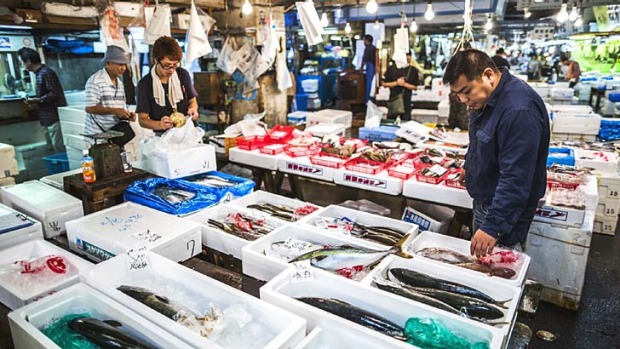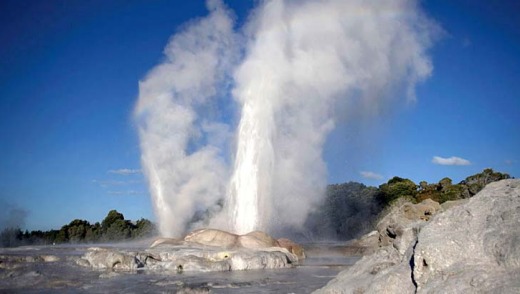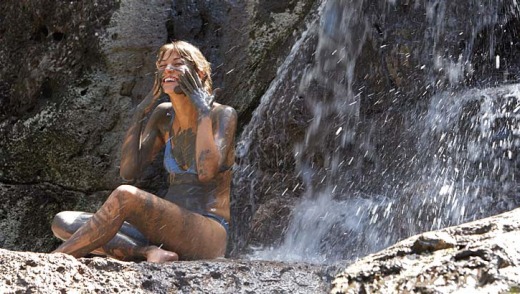
Guidebooks are full of lists of "places to see", but it is much harder to find out where to go to give your other senses a turn.
Although tourists shouldn't automatically turn their noses up at visiting any pongy destination, it's worth noting some come up smelling decidedly less rosy than others.
Here's our top 10 sights that come with an odour all of their own.

Tsukiji fish market - Tokyo
A trip to Tokyo wouldn't be complete with an early morning visit to the Tsukiji fish market - the world's largest and busiest. Open every morning from 3.30am to 6am, groups are allowed in to watch the tuna auction that the owners claim has been operating for 20 generations. The nostril-assault may be too much for some people in the hours before the sun has even hinted at rising. A less pungent alternative is available in Tsukiji's outer market, narrow streets packed with stalls selling fresh seafood and specialty items including real wasabi.
The Market is set to relocate to a larger premises in Toyosu in late 2016, so visitors have a limited time to make the most of the unforgettable (and free) attraction.

Funen Island - Denmark
Archaeologists on a dig in Denmark made a discovery in March that is definitely not to be sniffed at - two 700-year-old toilets still, er, full. The 14th century excrement is said to be in "excellent condition" and the years have done little to mellow their pungency.
Scientists hope to get a better idea of what people ate in medieval Denmark by examining their find. The barrels dug up in Vilhelm Werners Square in Odense on the island of Funen were previously used for transporting goods and storing fish.
Excavation of the site is continuing and it is now the largest excavation in an urban area in Danish history. Tourists can visit the site and have a free tour of the excavations every Tuesday and Thursday, as well as popping into the archaeologist' workshops.
Seal Island - South Africa
The scent of a seal wouldn't be one most of us are familiar with. If you're close enough to smell them, you're generally too close, as they can be remarkably quick when they decide to lunge. But head over to Seal Island, in the huge False Bay outside of Cape Town, and you'll find the home of more than 60,000 Cape fur seals and their pungent odour. Boats are available to take tourists to see the creatures, although disembarking isn't an option as it is too rocky. And it's best to keep upwind of their distinctive smell, described as a mix of rotting flesh, fish and excrement.
Bird Island Nature Reserve - South Africa
Another South African smelly hotspot, the three hectare island on the Cape west coast is an important breeding and roosting site for seabirds. With the gannets and cormorants come their droppings - known as guano. The strong-smelling stuff was collected from the island between 1888 and 1990, and used as fertiliser. A section of the island was even paved to make guano collecting easier.
A tourist centre on the island provides a vantage point for visitors to look out at the thousands of gannets - or what they've left behind, depending what you're into. For those that just can't get enough of the stuff, there is even a guano museum housing information on the "white gold". No word on the existence of a gift shop for those must-have guano souvenirs.
La Brea tar pit - Trinidad
Tourists smell the Caribbean's ugliest tourist attraction before they see it. Bubbling and hissing, the world's largest natural asphalt lake draws nearly 20,000 people a year. Pitch Lake near La Brea in the southwest of the island is mostly hard enough to walk on, but the central section could swallow a car and looks just like the hard surface. So don't just watch your nose - also watch your step!
Venice
It's a common complaint associated with the city built around canals. But therein lies the beauty of it - and if you aren't prepared to come across some unfamiliar smells travelling, stay at home. The smell in Venice is vastly over-exaggerated, although it may depend on factors including the time of year and what area of the city you are in. But on the whole, long and patient dredging of the city's canals has improved the situation - and the idea they are used as the city's toilet is an urban legend at best, with septic tanks installed in most public buildings and many private ones.
Other cities are just as stinky with their over-population of cars and don't have the smell of fresh bread, coffee and pastries that waft over Venice. Take a gondola to St Mark's Square and take in the sights - and smells - of the city that has remained largely the same as it was 600 years ago.
Ijen Volcano - Indonesia
Not just smelly - but dangerous, the sulphur of Ijen Volcano in Java gives off a rancid, eggy-stench, and it's poisonous to boot. Miners of the volcano have to chip off chunks of the yellow material, which is blood-red until it solidifies, and carry it in flimsy baskets out of a steep crater. The noxious fumes produced by the sulphur visibly waft around, burning the throat and eyes, and can dissolve teeth if they are exposed long enough. Leave your camera at home, too - the fumes can even corrode delicate machinery within minutes.
Phan Thiet - Vietnam
There's something a little fishy about Phan Thiet. Thanks to a factory just outside the city in southeastern Vietnam which produces almost 17 million litres of fish sauce annually. The production of the powerfully pungent condiment essential to Vietnamese cuisine is long and complex, with anchovy-like fish cleaned and placed in large vats of brine with layers of salt. Left for up to a year, the by-product is then drained and bottled. Tourists to the area can often observe the process in the open shop houses lining the streets, as many locals also make their livelihoods producing the fish sauce.
Rotorua - New Zealand
No list of smelly sights would be complete without our very own Rotorua. Built on top of a geothermal hotspot, the smell of the city assaults the nostrils with a pungent rotten egg odour, but also provides tourists with some pretty amazing sights courtesy of the hot springs, spurting geysers and boiling mud pools.
Lonely Planet describes Sulphur City as New Zealand's most dynamic thermal area, and estimates nearly three million people visit annually - all despite its "pervasive eggy odour".
St Lucia
Saving the best smell for last, the upscale Caribbean island proves not all smelly sights need to reek of fish or eggs. St Lucia has become a world leader in chocolate tourism - a form of specialty travel that seeks and celebrates chocolate. The cacao plantations on the island give off a distinctive, rich aroma as the beans dry in the chocolate-making process. Chocolate tourists tour plantations, trace the steps of the production process, savour chocolate treats and learn how to make them in culinary classes, and even take chocolate-tasting lessons.
Stuff.co.nz